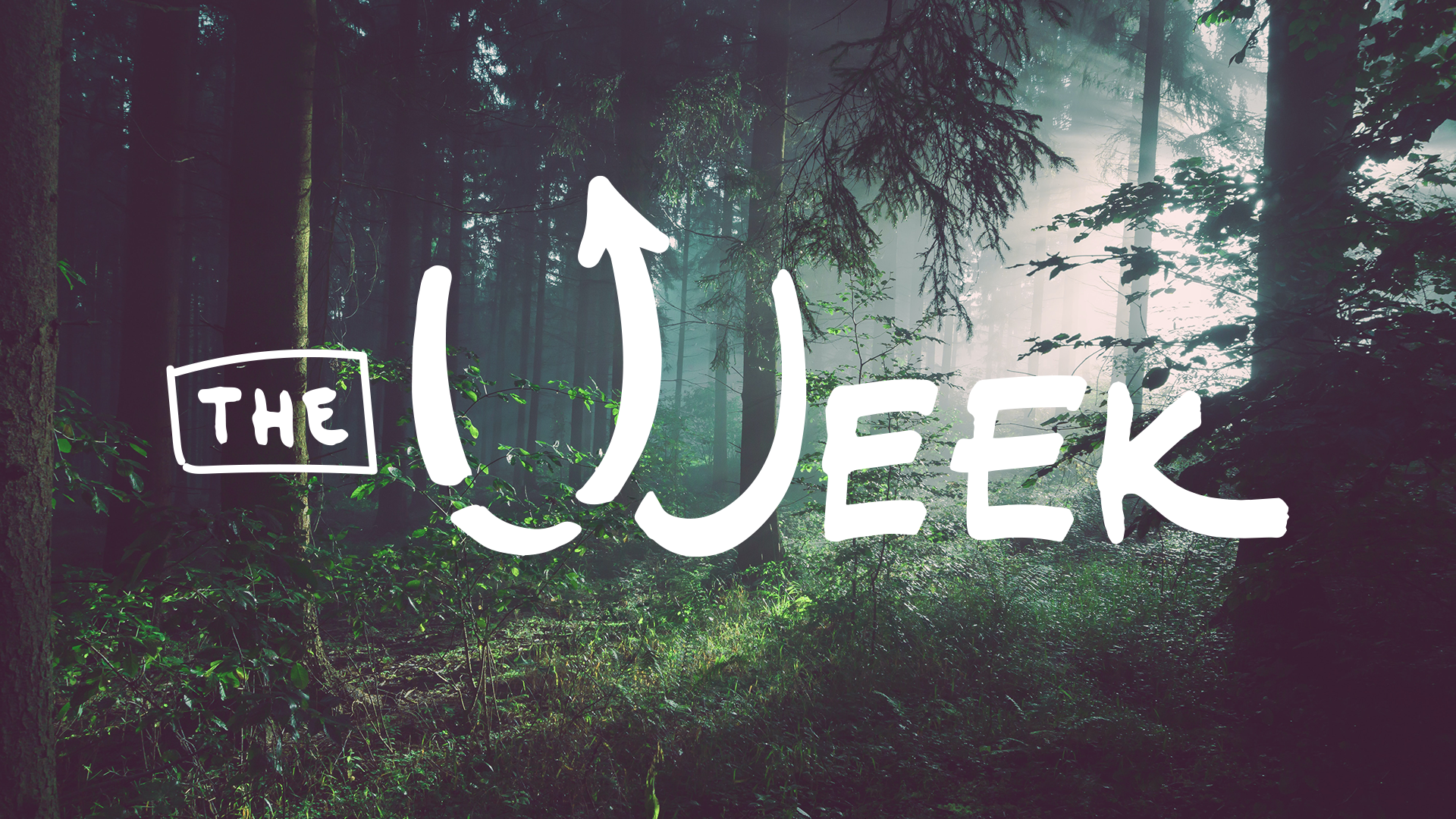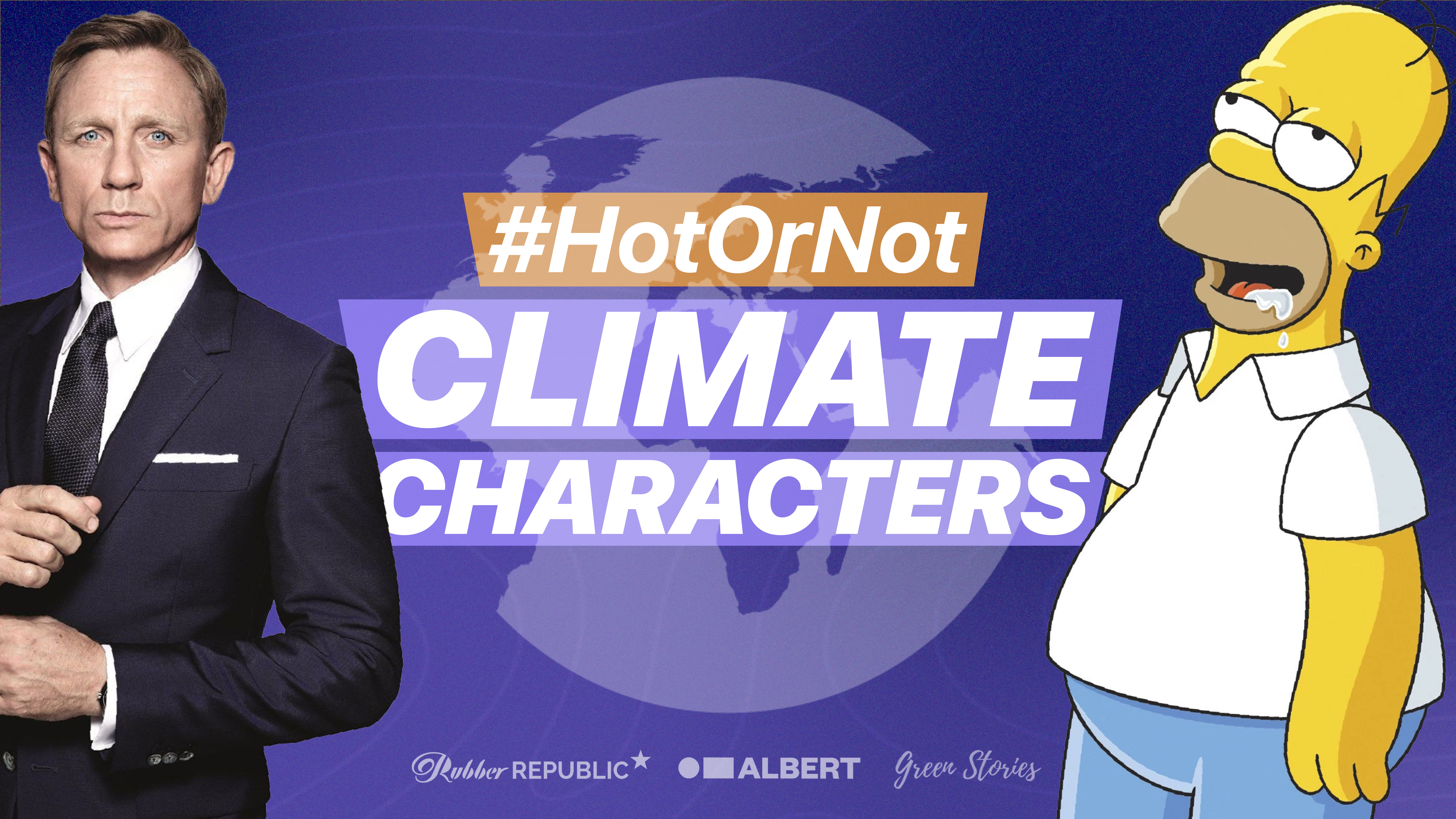I think it’s fair to say many of us are feeling a sense of overwhelm at the sheer mass of the problems our society are confronting.
One of the things I hear frequently is that we need more “political leadership”.
So that term has been banging around my head for the last year. Political. Leadership.
If leadership means taking a stand for something you believe will take us in a better direction, but politicians (at least at the national level) decide what to say by first polling to check whether it’ll make us vote for them, is that really leadership?
Maybe we’re looking in the wrong place? We do need politicians to step up and lead within the parameters they can. But, whether down to vested interests, or lack of vision, they aren’t, and put simply,
…If they aren’t leading, they aren’t leaders.
Politics has great power to support, legislate for and normalise new ideas, but significant innovations (for example the origins of the NHS) have often come from pioneering people who’s ideas are then spread by politicians.
What we need right now is leadership as a creative act.
When systems are breaking or in need of shifting, the real people we need to lead us aren’t those who’ve perfected the art of climbing the ladders inside the existing systems (and so are now at the top of them).
We need people who’re prepared to step into new spaces outside of traditional structures and imagine better ways of doing things. Those who’ve understood the challenges we face and are responding with practicality and creativity.
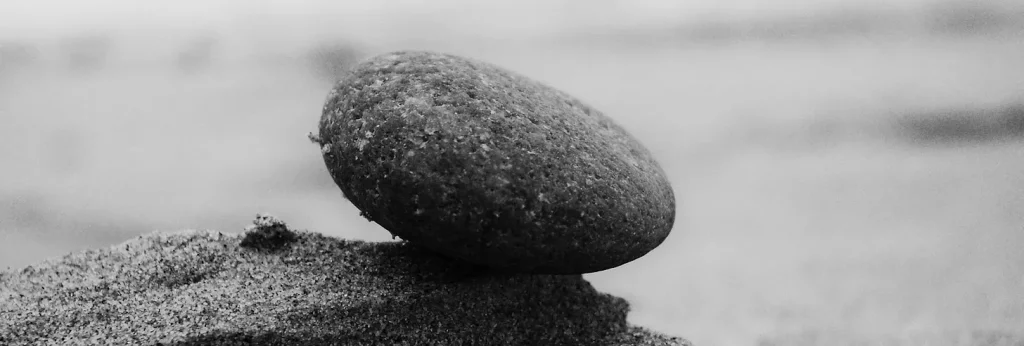
Is this a leader? No don’t be silly, it’s a stone! But is it more or less effective at leadership than some politicians we’re hoping for leadership from right now? That is a much trickier question…. image John Doyle via Unsplash )
So where are they?
When you look for them, they’re everywhere, but they’re pretty invisible in mainstream culture.
A huge amount of leadership IS happening, connected to place.
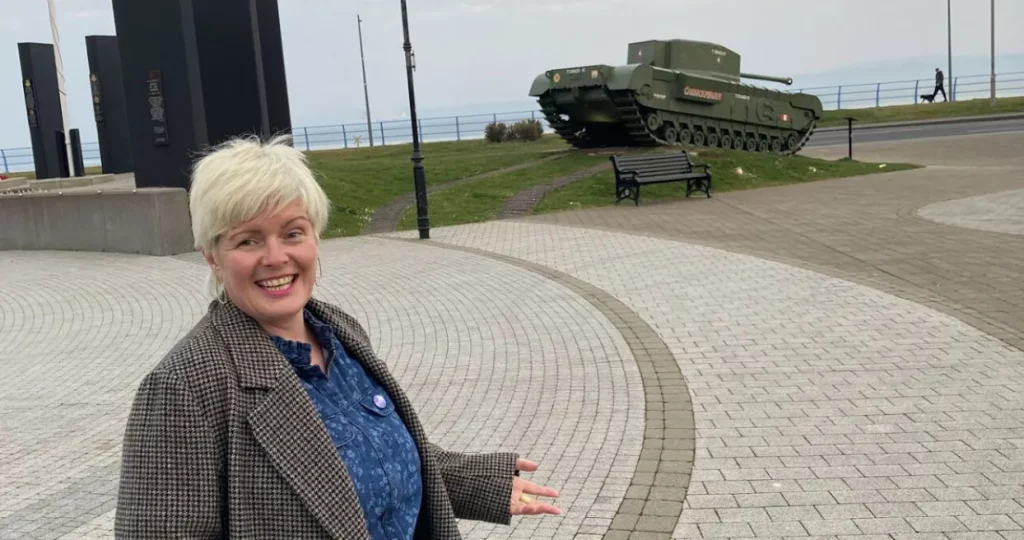
This is what a real leader looks like. Lee Robb of Carrick Greengrocers, in Northern Ireland (from Jon Alexander’s post here) – re-imagining how food is farmed and sold, who will also hate me for using a picture of her alone as she works as part of a group (which is part of my whole point. It’s just I can’t find a picture of her with her group – just with a tank).
An entirely different, better future is already emerging in the work happening all around us.
Some examples:
Middle Ground Growers in Bath – a group of young people taking healthy food and land matters into their own hands (literally) by regeneratively growing veg and delivering them to local doorsteps or businesses by e-bike.
Civic Square in Birmingham, “exploring how to create and co-build neighbourhoods that are ecologically safe, socially just and climate-resilient” – doing incredible work to flesh out how equitable neighbourhoods of the future could function and feel.
Bro Gwaun a wind turbine in West Wales, crowd sourced by local people fed up with high carbon energy options that send money into the pockets of oil companies, crowd sourced their own wind turbine (subsequently jointly backed by the local council, now generating funds for local projects and part of a growing international movement for local, collectively owned renewable power – what’s not to like?)
Carrick Greengrocers in Northern Ireland, who decide that ongoing fear of paramilitaries and monuments to tanks weren’t the right image for their town so became part of a growing movement to reshape our food and farming, and smashed their funding target when they offered locals a greengrocer selling locally regeneratively grown food.
Fordhall Organic Farm in Shropshire who crowd sourced money to buy their tenant farm out from under the feet of big agriculture and turn it into a community owned agroecological proof of what’s possible – sharing with, and learning from others doing similar things across the country and world.
Cooperation Hull: A group who’ve come together to try and put into practice a different way of bringing people powered politics to Hull – see their video here »
There are so many of these stories – this is just a fraction of what’s happening.
We don’t need another hero:
As Tina Turner said*, this isn’t about focussing attention on individuals – as the real innovation for new ideas that could create better ways for us to live collectively, are unsurprisingly happening collectively.
*(I’m pretty sure this is what she meant – songs require synthesis but I imagine if she were writing a substack post…)
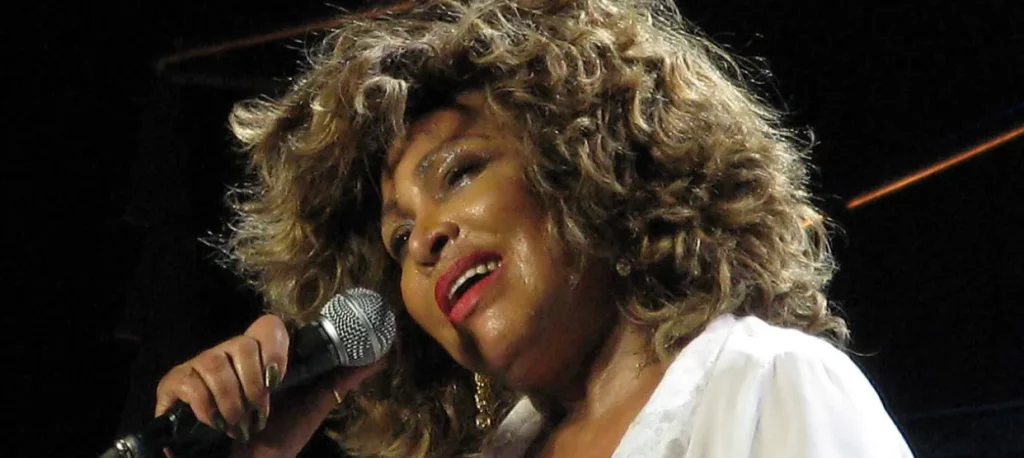
A joyfully gratuitous image of the amazing Tina Turner, from creative commons
All of these projects are led by groups taking matters into their own hands, gathering momentum to make things happen, and they prove that together is the way to build the future we need.
Rather than asking for permission or policy from government, they’re building the world they want to see now.
They’re taking back control of our future.
Some of these leaders are consciously networked together, listening to each other, and creating a constellation of movements, generating exciting momentum that could reshape how we feed ourselves, build and power our homes and businesses, commute, and run our democratic processes.
People are getting practical with tasks that could genuinely change the world.
Seeing and feeling these movements is increasingly vital if we are to harness more energy to join them, and to prevent that appetite for change being harnessed by more regressive thinking. If we don’t tell the stories of where real people want to go, we leave the door open for charlatans with false stories and false solutions.
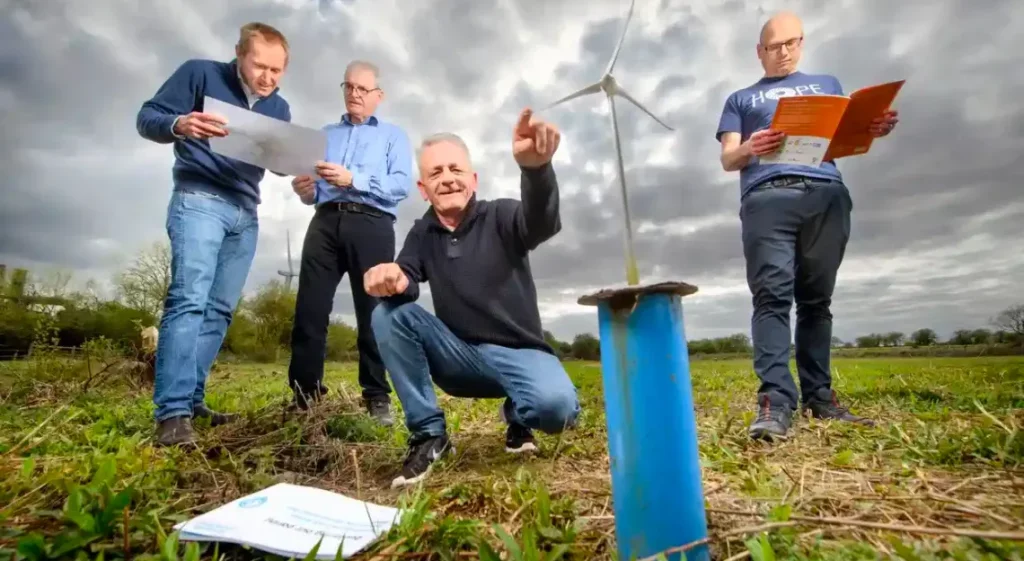
These folks from Ambition Community Energy from the Lawrence Weston estate on the outskirts of bristol built the largest wind turbine in England to combat fuel poverty in their area – and now they’re planning to build more.
Leaders gonna lead. Politicians gonna help:
With our work on Storytelling for a better future, we’re looking to create a shift to:
Recognise and spotlight the true leadership work being done in communities and startups across the country and world
Frame politicians as potentially helpful partners, advocates and flame fanners of this creative work
…with the hope that…
Awareness is raised of the widespread, possibility generating leadership work already happening, giving people more routes to shape their own futures by getting involved
…and…
Politicians will find it easier to support a more visible and growing movement, and will have greater legitimacy to get it championed, regulated for, and backed by policy (if vested interests aren’t at play, but that’s another story).
…so together leaders and politicians can accelerate the world that’s possible into being.
So what can we do? Storytellers gotta step up!
We’ve built a society that rewards extractive behaviour. But other equally valid parts of human nature exist and are visible all around us.
Storytelling has a huge role to play in deciding which aspects of ourselves and which possible futures we spotlight.
I believe it’s the duty of storytellers at this moment to start telling the stories of those who’re already leading the way (rather than focussing on those who aren’t, and even…can’t?).
As if we don’t make visible the good that’s already happening, how do we expect others to see it, join in and build momentum?
Simply, how about we…
Step 1: Find the people, often in groups, who’re actually leading
Step 2: Tell other people about them – and make their stories more engaging and visible.
Step 3: Join them – and become part of them – because all of us can
We can work together to create the world we need, with whatever resources we can contribute to the collective pot. Let’s tell stories about the future being created, and the future we want. At minimum you can benefit from the hope that those you’re vainly looking to for leadership are not the leaders you’re looking for.
Because the real leaders are all around us, if we look for them.

